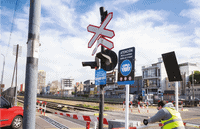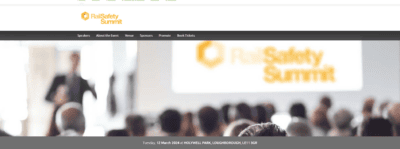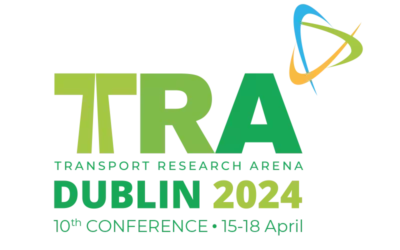Welcome to the Human and Organisational Factors (HOF) Digital Platform, the new interactive forum for sharing and exchanging knowledge and information on HOF. Are you a HOF Novice, Trainee, Specialist, Manager, CEO in European or international railways?
Are you coming from another mode of transport or from another industrial sector? Come and enter our HOF community-based Digital Platform! It is easy to find, share, exchange information, best practices, articles and more on this secure and user-friendly platform. https://railhof.org/online-gambling-transport/
This platform brings together materials and resources to support understanding and application of HOF in the railway sector. The platform links to information on recognised HOF topics and methods relevant to the railway community, as well as providing links to other high risk industry sectors such as aviation, nuclear, and healthcare.
You may also be interested in HOF safety documents that are or will be produced based on the experience of railway members. On this platform, railway know-how will be highlighted thanks to case studies, good practices, return on operating experience and, more generally, the experiences of railway members when integrating HOF into the SMS, for example, but also when they have to develop a safety culture or work on safety leadership. Many HOF topics are covered in the “resources” tab and are divided into 4 main themes:
Join us
Are you interested in HOF?
Do you want to learn about Human & Organisational Factors? Safety culture, non-technical skills, health and safety, more?
Join us on this international and diverse network which captures in one place the valuable and enriching information and material, either academic or practical railways-oriented, on the organizational and human factors that you need.
Are you involved in HOF activities?
You want to learn about Human & Organisational Factors? Safety culture, non-technical skills, health and safety, more?
Join us on this international and transversal network which capitalizes the valuable and enriching information and material, either academic nor Railways oriented, on the organizational and human factors that you need.
Are you an HOF expert?
Are you a Rail Human and Organisational factors expert, a Rail Safety expert, a Railway Head of safety, or other? This space is made for you. Here, you have access to confidential information and can even create or participate in a discussion forum to initiate conversations and exchanges with your peers.
What is HOF?
Human and Organisational Factors (HOF) is a scientific discipline concerned with the understanding of interactions between humans and other elements of a system, and the profession that applies theory, principles, data, and other methods to design in order to optimize human well-being and overall system performance (International Ergonomics Association).
Outside of the rail sector, HOF is often referred to as either Human Factors (HF) or Ergonomics. All three terms have the same definition.
HOF integrates knowledge in the physical and social sciences such as Management Science, Sociology, Design Science, Political Science, Economics, Psychology, Physiology, or Engineering to enlarge the scope of study and investigation while considering organisational, institutional, cultural or political contributors to safety. The term ‘organisational’ has been introduced to highlight the organisational level of analysis and not only the individual level although obviously organisations are composed of individuals (ERA).
Besides supporting the integration of safety at the design stage, the HOF approach provides concepts and methods to identify the gaps between the task (work as prescribed or expected), and the activity (work as actually performed or experienced and reported by workers). These gaps, whether concerning the task or/and the activity are problematic as they are a source of residual risk and need to be taken into account (ERA).
This allows a better managing of workplace reality in complex organisations such as railway socio-technical systems, which is critical to lead to safety improvements (European Railway Agency).
What are HOFs in concrete terms?
Why do people make errors?
What are non-technical skills?
What are error prevention techniques?
Why do people break rules?
What are performance influencing factors?
News
New contributions
Automation Myth Busting Paper#3 Automation and mental workload
Automation paradoxically has the potential to both increase and decrease mental workload, depending on the circumstances. Furthermore, decreasing workload can actually put an operator into an underload state, which is just as bad for performance as overload. We have learned these lessons in the aviation and, more recently, automotive industries; as accident reports demonstrate, we are now starting to see their impact on the railway with the ... READ MORE
Automation Myth Busting Paper#4 Teaming between humans and automation
Due to technological advances, automation is nowadays no longer regarded only as a tool for humans but, due to the execution of complex tasks, is increasingly discussed in terms of a team member. This article describes how successful teaming can optimally be realized so that the strengths of the human operator and the automation are brought to bear. The decisive factor is a human-centred work design that focuses on the needs of human ... READ MORE
How to use the SPAD toolbox – RSSB
https://www.rssb.co.uk/what-we-do/key-industry-topics/spad-good-practice-guide/how-drivers-can-manage-spad-risk/how-to-use-the-spad-toolbox READ MORE
Resources
The safety management system (SMS) is part of the business processes of the organisation and is not just a paper-based system specifically developed for demonstrating compliance with the regulatory framework. The ERA identifies that “the purpose of the SMS is to ensure that the organisation achieves its business objectives in a safe manner and complies with all of the safety obligations that apply to it” and that “Adopting a structured approach enables the identification of hazards and the continuous management of risks related to an organisation’s own activities, with the aim of preventing accidents.”… Read more
The systematic integration of HOF cannot be done without having a consistent reference base in the form of regulations, standards and tools. This basis makes it possible to develop the integration of HOF in the Safety Management System (SMS). This common reference allows for standardisation of HOF both within and between companies. Indeed, the systematic integration of HOF into the European railway sector at the end of the twentieth century and the beginning of the twenty-first century was not a priority for all. It was necessary to develop a common vision, common definition and tools which allowed the sector to build a common understanding of HOF… Read more
The term Human Performance refers to the contribution that humans make to the performance of a system. It describes how people carry out their work, whether as an individual or as a team, in order to meet a required objective.
From a HOF perspective, human performance is a key focus when considering how a system can be optimized, as well as where it can be vulnerable to failure. When systems are designed to accommodate the capabilities, limitations and skills of the people who utilize them, human performance can ensure those systems are optimized and functioning well. When they are not, human performance can be impacted, and the system becomes vulnerable. Effective systems are tolerant of human error or human failure because they have been designed to anticipate and quickly recover from it – and rail systems are no different.… Read more





